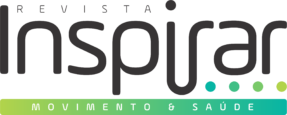 ☰
☰
 ☰
☰

Edição: ED-1-JAN-FEV-MAR
RESUMO
É notória a importância do sono no que concerne à recuperação de lesões e doenças, e há um entendimento emergente dos papeis restaurativos do sono no processo saúde-doença. O ambiente hospitalar é com frequência inóspito para a geração e manutenção do sono e esse prejuízo é ainda mais pronunciado na Unidade de Terapia Intensiva (UTI). O Objetivo foi descrever o ritmo de atividade-repouso de pacientes internados em UTI, com medidas de inibição dos eventos estressores como luz e ruído. Trata-se de um estudo experimental, randomizado e prospectivo realizado em três UTIs na cidade de Curitiba, onde o grupo experimental (GE), fez uso de actimetria, máscara para olhos, tampões de ouvido com preenchimento de um diário de sono. O grupo controle (GC) fez uso de actimetria e preenchimento do diário do sono. Os grupos foram submetidos à avaliação das variáveis não-paramétricas M10 que reflete a atividade média das 10 horas mais ativas, L5 que reflete a média das 5 horas menos ativas e RA que representa o cálculo da diferença entre as 10 horas mais ativas e as cinco horas menos ativas, geradas pelo actímetro. Inclusos 12 pacientes, 6 no grupo GE e 6¨no grupo GC. Verificou-se uma forte tendência ao benefício dos dispositivos pela variável L5 (p=0,54) e RA (p=0,55) na comparação entre os grupos. Ambos os grupos relataram fatores ambientais como barulho (83%) e administração de medicação (50%) os principais fatores perturbadores do sono na UTI. Máscara para olhos e tampão de ouvidos são de fácil utilização e baixo custo, podem ser coadjuvantes na qualidade do repouso.
Palavras-chaves: Sono, Unidade de Terapia Intensiva, Actigrafia, Ritmo Circadiano.
ABSTRACT
The importance of sleep in the recovery of injuries and illnesses is well known, and there is an emerging understanding of the restorative roles of sleep in the health-disease process. The hospital environment is often inhospitable for the generation and maintenance of sleep and this impairment is even more pronounced in the Intensive Care Unit (ICU). The objective was to describe the activity-rest rhythm of patients hospitalized in ICU, with measures to inhibit stressors such as light and noise. This is an experimental, randomized, prospective study conducted in three ICUs in the city of Curitiba, where the experimental group (GE) used actimetry, mask for eyes, earplugs filled with a sleep diary. The control group (GC) made use of acymmetry and filling of the sleep diary. The groups were submitted to the evaluation of the non-parametric variables M10 that reflects the average activity of the 10 most active hours, L5 that reflects the average of the 5 hours less active and RA that represents the calculation of the difference between the 10 most active hours and the five hours, generated by the actimeter. Including 12 patients, 6 in the GE group and 6 in the GC group. There was a strong tendency to benefit the devices by the variable L5 (p = 0.54) and RA (p = 0.55) in the comparison between the groups. Both groups reported environmental factors such as noise (83%) and medication administration (50%) the main disturbing factors of sleep in the ICU. Eyepiece mask and ear cap are easy to use and inexpensive, can be aids in the quality of rest.
Keywords: Sleep, Intensive Care Unit, Actigraphy, Circadian Rhythm
Maíra Jaquelinny Maturana1, Marluci Luzia Lunelli2, Bruno Coymbra do Amaral2, Elisabeth Capel Kleinhans2, Maria Carolina Ceron Foppa2, Martha Raquel Santos2,
1.Mestre em Fisiologia. Universidade Federal do Paraná. Curitiba/PR. Brasil
2-Pós-graduando em Fisioterapia em Terapia Intensiva. Faculdade Inspirar. Curitiba/PR. Brasil
Autor para correspondência:
Maira J. Maturana
Rua Doutor Guilherme da Silva, 190. Campinas/SP
e-mail- maira.maturana@inspirar.com.br